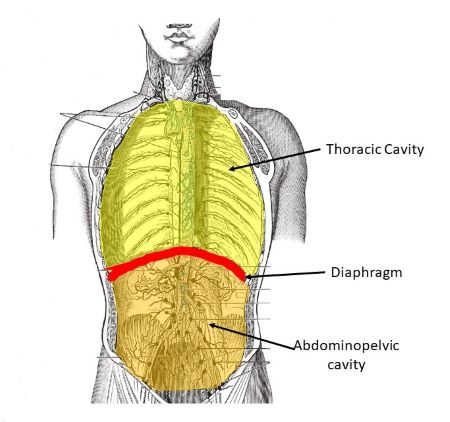How to Breathe Correctly?
“I breathe every day and I am still alive, so what do you mean by breathing correctly?”
This is a common response when you look at the title of this blog. To answer this question, let us do one exercise: focus on your breathing right now, for at least a minute. Try doing this at different points during your day. You will notice, most of the time, you are just holding your breath rather than breathing. Strange, isn’t it?
The common cause of this is stress, anxiety, and email apnea (prolonged breath hold during work or when in front of a screen, especially when texting and emailing). We unconsciously make our breath shallow and confined to the chest. This overstimulates the sympathetic nervous system which is activated during dangerous or stressful situations (fight or flight). This in turn makes us feel stressed and anxious, turning into a vicious cycle.
One can overcome this by breathing “correctly”, i.e., by practicing diaphragm breathing also known as “belly breathing” or “abdominal breathing”. Here, you breathe from your belly and then to your chest, like a wave, making it circular.
How does diaphragm breathing work?
Visualize your abdomen. Everything above it comprises the heart, lungs, and brain whereas below it you will find the liver, stomach, pancreas, kidney, and intestines. This means it separates the thoracic cavity from the abdominal one. The image below shows this.
When you breathe from your chest, you are mainly supplying oxygen to the heart, lungs, and brain. This is usually the case during fight or flight when our sympathetic nervous system is activated. This is beneficial during immediate survival as we majorly need these mentioned organs to survive.
Now, when you breathe from your abdomen it creates space for your lungs to expand even more since your diaphragm pushes itself down. This movement in turn presses against the other organs in the abdominal cavity which creates space for the breath to move in the lower section of the body. It massages the heart thereby improving blood circulation. More oxygen and blood supply in the lower part gives a signal to your body that there is no danger hence it can relax.

Therefore, diaphragm breathing is beneficial for long-term health as it induces “no danger” signals in the body. Whereas, chest breathing is needed during immediate survival for a fight and flight response.
These benefits of diaphragm breathing have been tested in several research studies. Some of them are as follows:
- Reduces anxiety, depression, anger, and confusion
- Lowers heart rate and blood pressure
- Decrease muscle tension
- Improves blood circulation
- Helps you relax
- Increases blood oxygenation
- Reduces stress hormone (cortisol)
- Makes you alert
- Increases antioxidant defense by increasing melatonin
Try Diaphragmatic Breathing with us right now
- Sit or lie down in a comfortable position. Close your eyes gently.
- Place one hand on your chest and the other on your belly. The bottom hand should do the moving. The top hand should remain still or move only after the bottom hand has moved.
- Inhale through your nose for 4 seconds, by expanding your belly and then your chest. It should look like a wave.
- Exhale slowly through your mouth for 6 seconds. You can choose to expel air through your belly by squeezing it and then your chest or vice-versa.
- Repeat this for 5-10 minutes
To conclude…
If chest breathing is performed for too long, one tends to stay in a chronic stress state which is in the long run responsible for several diseases. All in all, be mindful of your breathing style, and in the first few days make conscious efforts to retune your body to breathe abdominally. With time, it will become habitual. It is efficient, low-cost, and a simple way to reduce anxiety
You can check out our social media channels to learn more about different breathing styles. Until then, stay healthy and aware. Keep following our blogs as we want to help you catch your breath!
Sources:
- Harvard Health. (2016, March 10). Learning diaphragmatic breathing. https://www.health.harvard.edu/healthbeat/learning-diaphragmatic-breathing
- Ma, X., Yue, Z. Q., Gong, Z. Q., Zhang, H., Duan, N. Y., Shi, Y. T., Wei, G. X., & Li, Y. F. (2017). The Effect of Diaphragmatic Breathing on Attention, Negative Affect and Stress in Healthy Adults. Frontiers in Psychology, 8. https://doi.org/10.3389/fpsyg.2017.00874
- Magnon, V., Dutheil, F., & Vallet, G. T. (2021). Benefits from one session of deep and slow breathing on vagal tone and anxiety in young and older adults. Scientific Reports, 11(1). https://doi.org/10.1038/s41598-021-98736-9
- Martarelli, D., Cocchioni, M., Scuri, S., & Pompei, P. (2011). Diaphragmatic Breathing Reduces Exercise-Induced Oxidative Stress. Evidence-Based Complementary and Alternative Medicine, 2011, 1–10. https://doi.org/10.1093/ecam/nep169
- Posts, V. M. (2014, November 25). Are You Breathing? Do You Have Email Apnea? Linda Stone. https://lindastone.net/2014/11/24/are-you-breathing-do-you-have-email-apnea/
- Zaccaro, A., Piarulli, A., Laurino, M., Garbella, E., Menicucci, D., Neri, B., & Gemignani, A. (2018). How breath-control can change your life: A systematic review on psycho-physiological correlates of slow breathing. Frontiers in Human Neuroscience, 12. https://doi.org/10.3389/fnhum.2018.00353


